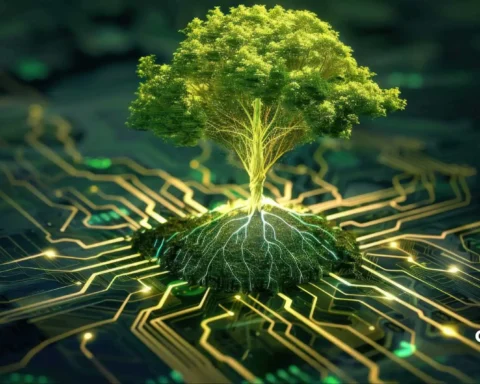Energy flow in ecosystems is a fundamental aspect of ecology, influencing the structure and dynamics of biological communities.
Understanding the models of energy flow in an ecosystem helps to illustrate how energy moves through various trophic levels, from primary producers to higher-level consumers.

This informative blog talks about the different models of energy flow in an ecosystem, explaining their significance and how they contribute to understanding ecological systems.
Table of Contents
What is an Energy Flow in the Ecosystem?
Energy flow refers to how energy moves through an ecosystem, starting from the sun and eventually reaching various organisms. Every organism plays a role in this energy transfer, whether as a producer, consumer, or decomposer. Understanding this flow helps us see the interconnectedness of life in any ecosystem, from a forest to a pond.
Energy is essential for all living things. Plants, for example, use solar energy to make food through a process called photosynthesis. Animals and other organisms then consume these plants (or other animals) to obtain energy for their growth and survival. Without this flow of energy, life as we know it would not exist.

What are the Models of Energy Flow in an Ecosystem?
Scientists use several models to represent how energy flows in ecosystems. Each model highlights different aspects of energy transfer and the relationships between organisms.
Here are some key models of energy flow:
The Trophic Level Model
The trophic level model organizes organisms based on how they obtain energy. There are four main trophic levels:

- Primary Producers: These are usually green plants that convert sunlight into energy through photosynthesis. They form the base of the energy pyramid.
- Primary Consumers: These are herbivores that eat primary producers. For example, rabbits and deer consume plants for energy.
- Secondary Consumers: These are carnivores that eat primary consumers. An example would be a fox eating a rabbit.
- Tertiary Consumers: These are top predators, such as eagles or wolves, that eat secondary consumers.
In this model, the flow of energy is unidirectional, meaning it moves from producers to consumers, creating a hierarchy. As energy moves up the trophic levels, there is a progressive decrease in available energy due to energy loss at each step.
The Grazing Food Chain
The grazing food chain is a model that shows how energy flows from herbivores to carnivores.

It starts with primary producers (like grass) being eaten by primary consumers (like cows), which are then consumed by secondary consumers (like lions). This model highlights the relationships between different trophic levels simply and straightforwardly.
The Detritus Food Chain
The detritus food chain is another important concept in the models of energy flow in an ecosystem.
It starts with dead organic matter, like fallen leaves or dead animals. This organic matter is broken down by detritivores (organisms that feed on dead material) and then consumed by primary consumers and other trophic levels.
This model emphasizes the role of decomposers in recycling nutrients and energy in an ecosystem.
Energy Flow Diagrams
Scientists often use energy flow diagrams to visualize how energy moves through different trophic levels.
These diagrams typically show the amount of energy available at each level, highlighting the loss of energy as it moves up the chain.
The energy pyramids are common representations, where the width of each level indicates the amount of energy available.
Y-shaped Energy Flow Model
The Y-shaped energy flow model illustrates how energy can flow in different directions from a primary producer. In this model, energy can either flow to herbivores or be diverted to decomposers. This flexibility in energy transfer emphasizes the complexity of ecosystems.

The Role of Different Organisms in the Models of Energy Flow in an Ecosystem
Different types of organisms play specific roles in energy flow within an ecosystem:
Primary Producers
Primary producers are the backbone of energy flow. They convert sunlight into energy, supporting the entire ecosystem. Green plants are the most common primary producers, utilizing photosynthesis to create food.
Primary Consumers
Primary consumers (herbivores) rely on primary producers for their energy.

They are crucial in transferring energy from plants to higher trophic levels.
Secondary and Tertiary Consumers
Secondary consumers (carnivores) and tertiary consumers (top predators) feed on primary consumers and play essential roles in regulating population sizes within ecosystems.

They ensure a balance between different species, preventing any one group from becoming too dominant.
Decomposers
Decomposers, such as fungi and bacteria, break down dead organic matter. They play a crucial role in recycling nutrients and maintaining the flow of energy through the ecosystem.
Conclusion
Understanding the models of energy flow in an ecosystem is essential for grasping how energy moves through different organisms and trophic levels. Each model, whether it’s the trophic level model, grazing food chain, or detritus food chain, offers insights into the complex interactions within ecosystems.
By recognizing the roles of primary producers, consumers, and decomposers, we can appreciate the delicate balance of life and energy that sustains our planet.
As we continue to study ecosystems and their energy dynamics, we can better understand the importance of conservation and maintaining ecological balance for future generations.

FAQs
What is the Y-shaped model of energy flow?
The Y-shaped model of energy flow illustrates how energy moves through two interconnected food chains: the grazing food chain and the detritus food chain.
What is an energy flow diagram?
An energy flow diagram is a visual representation that shows how energy moves through different components of an ecosystem, from its source, such as the sun, through various trophic levels, such as producers, consumers, and decomposers.
What is the model of energy flow in an ecosystem?
The model of energy flow in an ecosystem explains how energy is transferred from one trophic level to another, starting from primary producers to consumers and decomposers, following a unidirectional path.









